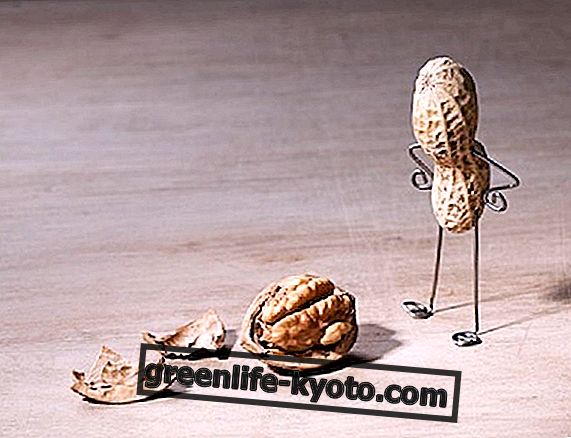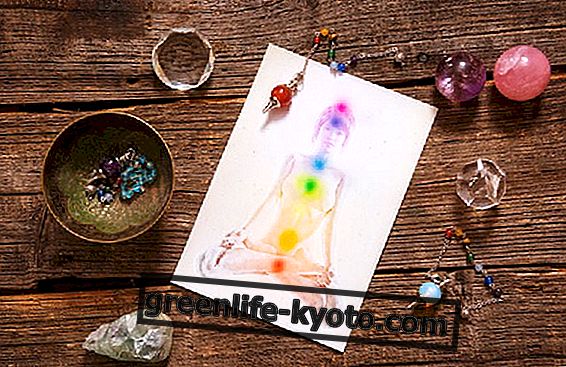
As of death, little is spoken of pain. Yet it is an integral part of life and an important tool for knowing oneself.
Feeling too much, feeling nothing
Let's start with the real case of a 13-year-old girl, Ashlyn Bloker, who has never experienced physical pain in her life. Put like that, it would be envied at a distance. The case is similar to that of a Canadian stenographer who was reported in the early 1970s. The woman was full of scars, wounds, bruises. Not only: she was hospitalized repeatedly for burns (the signal came only from the smell of burning). In the same way, he had to fight against infections that are usually dammed with rest and small attentions, as the pain warns us of the need to be treated. She was not equipped with internal reflexes that warned her of imminent danger.
From the physical point of view, the nerves that transmit pain send electrical signals to the brain when they come into contact with something very hot or very sharp, causing the brain to respond: move the limb, move from the heat source or the blade. The electrical signals are transmitted through sodium ion channels (positively charged sodium atoms) whose "instructions" are contained in the SCN9A gene . In the case of the child, we are faced with a mutation that prevents her from creating those channels, so that the electrical impulses that normally reach the brain are never produced.
These two cases teach us something important, summarized in: if I don't feel pain, I don't know my limit.
The body's sacred reactions
But what are the preparations that the body has in the event of an alarm?
If you are injured or hit, the alarm bells that are activated are multiple and work in synergy. The blood, which in normal conditions circulates in the cutaneous vessels and in the abdominal organs, is diverted through the brain , the lungs and the muscles ; the heart increases its rhythm, increases blood pressure. Everything is set up to intervene against the source of pain. The liver secretes the accumulated sugar in the bloodstream and the blood brings the necessary nutrition to the muscles. In the case of wounds, chemical changes take place in the blood that can make it coagulate faster, to avoid bleeding. In the case of pain that originates from an internal source, the blood pressure can lower, nausea, dizziness, vertigo may occur .
Pain is in fact a sense, like sight, smell. Pain-sensitive nerve endings are distributed in the skin and organs and pain is felt when stimulated. The intensity of the pain does not depend on the amount of type of tissue offended, but on the type of offense. In summary, pain is a kind of speedometer that measures the speed at which tissue damage is occurring.
Dealing with pain with meditation
The graduated scale of pain and the pain threshold
The so-called graduated pain scale is a table in which the various types of physical pain are organized. It is based on the results of tests carried out with a colorimeter, a device that measures the degree of pain in "dol", as a unit of measurement. At 10, for example, there are some birth pains, temporary pains from sudden trauma, a lit cigarette held against the skin, the expulsion of some kidney stones. Just below, between 9 and 7 there are some types of heart attacks, some burns, fleeting muscle cramps, headaches from bleeding, infections or brain tumors. 6 is in fact the line that separates these pains from other more common ones such as most migraines, cold abdominal pains during digestion, lumbago and neuralgia, toothache, sinusitis, skin abrasions.
Pain receptors, nerve endings, are distributed in the body according to a functional pattern. In areas where a wound can cause lethal damage, such as in the groin and neck, the sensory nerves are on the surface. It is not the same for the extremities (hands and feet) that receive relatively few; the gray matter inside the brain is protected by the skull and lacks nerves that transmit pain, while the arteries that carry blood to the brain are rich.
Pain is usually classified according to this tripartite distinction:
- Puncture pain, is felt immediately after the burn or tear that occurs on a specific point;
- Burning pain, more dull, extends over time and spreads to a large area;
- Deep pain, born from the nerve endings of the internal organs rather than the skin.
The mastery of pain
Edward and Ruth Brecher in the publication " The why of physical pain", selected by the Reader's digest of the distant 1972 entitled "The wonders of our body and how to keep it healthy", at the end of the piece, talk about pain in these terms:
"And because physical pains, like what we see and hear, can also provide us with useful warnings, it is wise to bear them with serenity."
I find that in this sentence you concentrate a profound truth, which also illuminates the meaning of life. The way in which pain or illness is treated today is far from this intuition. Pain is master. He can tell us something important, but we must listen to him. Sometimes he says it more loudly, or the intensity increases, if we neglect, we postpone, we avoid.
Not only valid for burns and wounds. In some cases the body warns : "Stop, you know that you do not close circles and you do not finish anything." When you insist on frequenting those who take us to places we know, places where laziness takes over and loses itself. usefulness of friendship or in the case of loves that feed on selfishness. You may have had the feeling: "Don't go and find that person again", but the habit, the desire to fill the time or similar matters have led you to give up. Then feeling a strange discomfort, which you did not immediately connect to not listening to self-inflicted. A slight fever, unexplained nausea, a ferocious headache or sudden back pain.
The power with which the body can reveal to us what is good for us is a factor that counts so much, so much and that we can evaluate and corroborate at any time.












